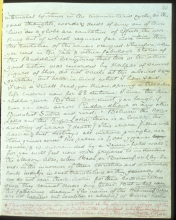Страница 17
inter-natal existence in the manvantaric cycle, so the good thoughts, words, and deeds of any one of these "lives" on a globe are causative of effects, the working out of which requires far more time than the evolution of the causes occupied. Therefore, when you read in the Jats and other fabulous stories of the Buddhist Scriptures that this or the other good action was rewarded by Kalpas of several figures of bliss, do not smile at the absurd exaggeration, but bear in mind what I have said. From a small seed, you know, sprung a tree whose life endures now for 22 centuries; I mean the Anuradha-pura Bo tree. Nor must you laugh, if ever you come across Pindha-Dhana or any other Buddhist Sutra and read: "Between the Kama-Loka and the Rupa-Loka there is a locality, the dwelling of 'Mara' (Death). This Mara filled with passion and lust, destroys all virtuous principles, as a stone grinds corn. (*) His palace is 7000 yojanas square, and is surrounded by a seven-fold wall," for you will feel now more prepared to understand the allegory. Also, when Beal, or Burnouf, or Rhys Davids in the innocence of their Christian and materialistic souls indulge in such translations as they generally do, we do not bear them malice for their commentaries, since they cannot know any better. But what can the following mean: — "The names of the Heavens (a mistranslation; lokas are not heavens but localities or abodes) of Desire, Kama- —
(*) This Mara, as you may well think, is the allegorical image of the sphere called the "Planet of Death" — the whirlpool whither disappear the lives doomed to destruction. It is between Kama and Rupa-Lokas that the struggle takes place.



Jats are the accounts of the Buddha's previous lives in the Jataka Tales.
The Anuradha-pura Bo tree is a Bodhi Tree (or "Bo tree", in Sinhalese) still existing in Anuradhapura, a major city in Sri Lanka, which is said to date back to the year 245 BC.
A Yojana is a Vedic measure of distance that was used in ancient India. It is equivalent to about 1.6 km (1 mi) as per modern measures of distance, although the exact value is disputed among scholars (between 2 and 5 km (1 and 3 mi)).